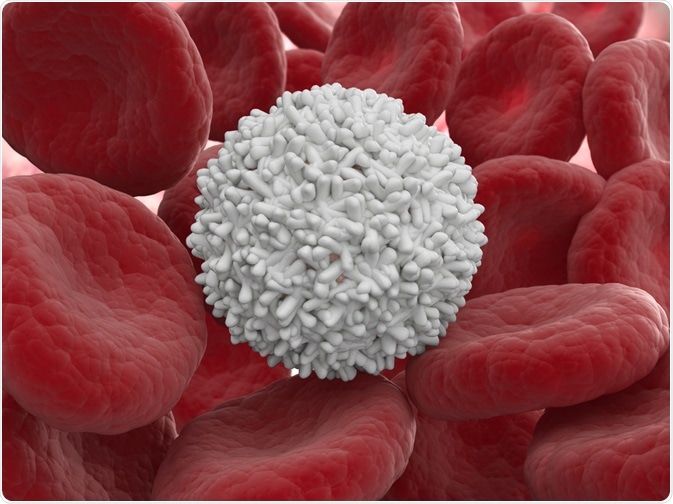The Mannan-binding lectin serine protease family, also called MASP family, is part of one of the complement system cascades. These proteins, critical for the immune response in the complement pathway, trigger the lectin pathway.
 Image Credit: Mopic / Shutterstock
Image Credit: Mopic / Shutterstock
The lectin pathway
The lectin pathway is the third pathway in the complement cascade, discovered after the classical and alternative pathways. It more closely resembles the classical pathway due to similar binding patterns but with different proteins.
Mannan-binding lectin (MBL) or ficolins binds a specific carbohydrate, which initiates the lectin cascade. The MBL and ficolins are associated with MASPs in a protein complex during circulation.
MASPs themselves are homologous to C1r and C1s in the classical pathway, which MBL was initially believed to be associated with. The discovery of MASPs came in 1992, where their similar domain structure was acknowledged but they were decidedly distinct from C1r and C1s.
The binding of MBL to certain specific carbohydrate structures initiates MASP activity. The proenzyme cleaves the complement components C4 and C2. This leads to the formation of a membrane-bound protein complex called C3 convertase. This is seemingly identical to the C1s enzyme of the classical pathway.
MASP-1
MASP-1, along with MASP-3 and MAp44 are produced through alternative splicing from MASP1. Structurally, it appears related to serine proteases, but it is separated from other proteases by two cysteine residues.
MASP-1 is itself not directly involved in the activation of the complement cascade. However, it is believed to have amplification functions in the complement cascade by cleaving complement C2 or activating MASP-2. This belief has recently been argued.
While one study showed that MASP-1 inhibition led to lectin pathway dysfunction, another study found that the same blockade of the lectin pathway in addition to evidence that MASP-1 directly cleaves MASP-2.
Some studies indicate a role of MASP-1 in the alternative pathway, as well. Knockout mice lacking MASP1, which is involved in production of both MASP-1 and MASP-3, did not have alternative pathway activity. Further, they lacked mature fD, a necessary part of the alternative pathway, and only had pro-fD.
It has therefore been suggested that MASP-1 and MASP-3 cleave pro-fD and produce mature fD. However, this is controversial, as a human study showed that a disrupted MASP1 gene did not affect alternative pathway functioning.
As seen by the above example, MASP proteins do not appear to be shared among the animal kingdom. MASP-1 function differs between humans and mice, but can be absent altogether in other animals, such as birds and fish.
However, it has been hypothesized that they instead have enhanced MASP-2 function, as MASP-2 has been shown to autoactivate and cause the lectin complement pathway by itself when in a pure system.
MASP-2
Along with MAp19, MASP-2 is produced by splicing of MASP2. The initial preprotein is cleaved to produce A and B chains that heterodimerize, resulting in the mature MASP-2 protein. Mature MASP-2 is the part of the protein complex which cleaves C4 and C2 upon MBL or ficolin target binding.
It has been argued whether MASP-2 autoactivates or is activated by something else, such as cleavage by MASP-1. Considering recent studies, it appears to be a bit of both. While evidence suggests that MASP-1 directly cleaves full-length MASP-2, it also appears to be able to auto-activate. However, in physiological conditions, MASP-2 activity seems to be decided by MASP-1.
In addition to a role in the lectin pathway, MASP-2 is involved in the coagulation cascade. It can cleave prothrombin to produce thrombin, which is central to the formation of a blood clot.
MASP-3
MASP-3 is produced from MASP1, along with MASP-1 and MAp44. The exon coding for MASP-3-specific serine protease domain lies within the MASP1 gene, therefore indicating that the alternative splicing mechanism from one structural gene that leads to MASP-1 and MASP-3 happened in a common ancestor far back.
MASP-3 was found to be implicated in the alternative pathway in mice, as knockout of MASP1 lead to the disappearance of the alternative pathway. MASP-3 specifically was hypothesized to have an important role by cleaving fB, the target of fD, directly.
This was due to dysfunctional MASP-3 being the common denominator in disease states where the MASP1 gene is defective. This was refuted by later human studies, which found no effect of depleted MASP-3. However, MASP-3 is still an important part of the lectin pathway with implications in other disease states.
Further Reading
Last Updated: Oct 24, 2018